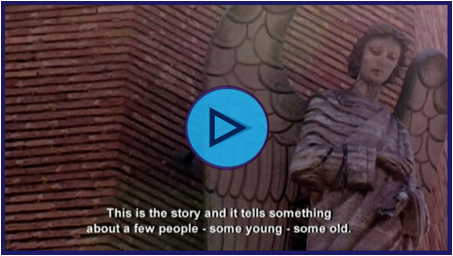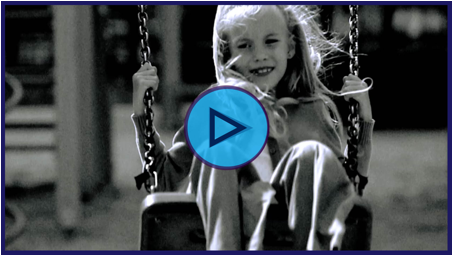The Subjective Voice and Hybrid Documentary Filmmaking Strategies:
A Case StudyJill Daniels
Introduction
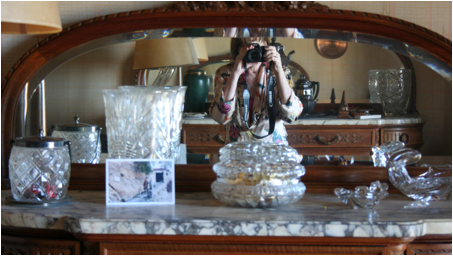
Figure 1: Journey to the South by Jill Daniels. High Ground Films 2017. Still.
In this case study of my recent documentary film practice I explore the notion that creative film practice produced from within the academy can create new knowledge. I suggest that although films communicate in a sensory mode that may defy written theorisation or interpretation, nevertheless they can add to knowledge through their originality, rigour and relevance to the wider social world. I argue that film theory is essential to enable the filmmaker to raise their work above the narrow framework of craft and, therefore, I developed and constructed my films by drawing upon film theory to inform the practice of the films’ making. I also built on ideas embodied in my previous films and those of others; and I relied on intuition. The blurring of perceived boundaries between fiction, art and documentary and the methods of ethnographic fieldwork and use of subjective voice are central to my practice. This pragmatic approach has been invaluable in the development of my creative practice from inside the academy.
All the films in this case study are explorations of memory, history, place and subjectivities, including autobiography. In the mediation of history and memory, I argue that the mimetic approach of realism in the production of documentary films may not always be feasible in recalling the past; since memories that are associated with traumatic experiences may be unreliable, other filmic techniques and strategies including fictionalised enactment may be found to evoke memory. In the construction of my films I take into account that the articulation of the past takes place in the present, and thus I seek to recreate the past rather than attempt to recapture it. Many of the films are located in places of traumatic events, such as war, or that are suffering the effects of economic globalisation; in the mediation of place I explore the concept that place may be foregrounded, not for its aesthetic qualities, but as a character to interact with memory and subjects. I focus on my extensive use of disconnected subjective voices in a range of tenses, which may create clashes of temporalities between sound and image. Some of the films are centred on the representation of myself to create a form of “subjective cinema” where embodied authors perform themselves in the first-person mode (Rascaroli). This approach has become increasingly prevalent in recent years and I discuss its effectiveness, rather than justify its presence in my practice, and the multiple and contradictory levels at which it exists (Chapman 63). In focusing on the production of autobiographical films in my dual role as maker and subject of a documentary film I explore my own subjectivity and the way it may act as a cultural guide in an exploration of the social world.
My films are conceived as experimental documentary films; to question and explore rather than conclude. To this end I argue that experimental films may bypass perceived demands for certainty, evidence and veracity (Landy 58). The demand for “evidence” is generally found in the conventions of mainstream documentary filmmaking whose aim is primarily to provide authentication of the mediation of historical events. Experimental films are often considered difficult to “read” in their use of unconventional filmic language and my choices of tropes and techniques—such as realism or fictionalised enactments—and the inclusion of stills, archive material, found footage or slow-motion that may be deployed in experimental documentary films may be varied. This affords me a flexibility that helps to open a window onto distinctive and original ways of mediating historical events, thus deepening our knowledge of those events. While my films were generally planned and often scripted carefully during the research period, I also relied on my responses to place, observation of the routines of daily lives of human subjects and chance encounters in my choices of filming. All the films were produced with a very small crew, generally one other person and me and this allowed me to obtain a greater intimacy with human subjects. There was usually a lengthy period of editing where choices in the films’ construction were considered and accepted or rejected; these decisions were often reconsidered. I generally continued editing until I decided that further editing would take the film no further.
Memory and History
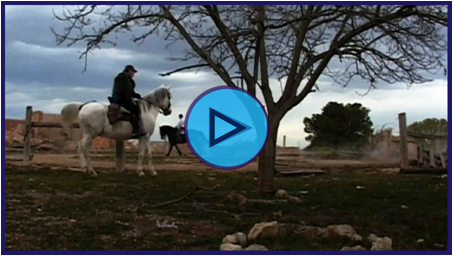
Figure 2 (top): Belchite. Figure 3 (bottom): Chance encounters. Not Reconciled by Jill Daniels.
High Ground Films 2009. Screenshots with links to video excerpts.The first film I made was for my practice-led doctoral thesis. Not Reconciled (2009) is a forty-minute film located in Belchite, a small town in northern Spain. It evolved from my interest in the history of the Spanish Civil War (1936–1939) and my earlier observation of privations and extreme inequalities in Spain in the late 1960s. There was no Truth Commission at the end of the Francoist era in Spain, no purge of the army or police and no assessment of the crimes of the regime. At the start of the twenty-first century, I became aware through the British press of the existence of unmarked mass graves in Spain. I chose to locate Not Reconciled in Belchite because it was the site of a three-week battle won by the Republicans. At the end of the war it was deliberately left in ruins by General Franco to symbolise his victory and a new “modern” town was built next to the ruins. My aim was to explore remembering and forgetting the traumatic events and experiences of the Spanish Civil War and its violent aftermath; the methodology of the film’s construction evolved after some trips to the location. I visited Belchite with the purpose of finding eyewitnesses to the events of the civil war, but this proved difficult. There was very little archive footage available to me. However, there were many first-hand accounts of life in the village before and during the war through diaries, letters and historical accounts.
My aim in Not Reconciled was to articulate Belchite as a place that embodies history where stories in the present are not yet completed; to mediate place as a once-lived environment for its human subjects and to analyse the varied ways it relates to the subjects in my film. I relied on chance encounters and I filmed characters going about their daily lives, children playing, men exercising horses and Spanish tourists wandering in the ruins, and I conducted “vox pop” conversations with elderly characters who generally evaded my questions of whether it was better to remember or forget the events of the war. Images of ruined churches and larger houses that survived the battle were central in the filming. I considered that the image of a ruined house may be used as a potent metaphorical depiction (Bachelard xxxvi). Images of houses ruined by the effects of war may convey contestation and a sensation of stasis; the curving back of time into itself. An image of a ruined house may be seen as a sign that has escaped from history. The sign then becomes the object of contemplation, because the past itself cannot be contemplated (Farassino 17). Other images consisted of collapsed passages, glassless windows, open doorways, walls newly spray-painted with Anarchist circled “A”s, the faint traces of painted shop signs, dead animals and human artifacts, a small plastic comb or the remains of a leather shoe.In order to convey the sense of a continuing past in the present I used many different images to evoke metaphorical significations. For example, images of wind turbines located on a hill, which loom over the town, were intended to evoke ideas of the forces of modernity and “progress”, and to present a jarring contrast to the desolation conveyed by the images of buildings ruined by the effects of war. As Andrew Schenker eloquently notes in his discussion of Spanish filmmaker Mercedes Alvarez’s The Sky Turns (2005), which charts a declining population in the small Spanish village of La Aldea:
Nothing speaks more elegantly to the bewilderment of the locals than a long shot of newly built windmills lining a distant hilltop while a villager, made tiny by Álvarez’s framing, looks on in the foreground, swallowed up by the forces of history. (Schenker 2011)
After filming the ruins and capturing observational footage of daily lives in the new town, as well as conducting brief interviews direct to camera, I contemplated the footage I had collected. In the editing of the images of ruined houses Iaimed torepresent a perpetual disintegration; to act as empty vessels for the bodies of tourists who trace their way in and around the buildings. The tourists’ physical movements suggest the way the houses’ former inhabitants may have moved in and out of the same space, but now the space is empty, its inhabitants absent. My purpose was to evoke a sensation that interior and exterior space had merged. I digitally manipulated some of the images to convey a sensation of ghostliness and to act as a brief temporal rupture within the diegesis; to evoke contestation rather than reassurance. The images of ruined houses are intended to express a sense of loss and a poignant recognition that they once represented their own corner of the world for their inhabitants; a “cosmos” that is irretrievably lost. Finally, I created fictionalised characters of ghosts of young Republican fighters as surrogate witnesses to the town’s contested history; their whispered voices speak from a mass grave. The disconnected subjective voices collide with the images of place in order to convey the immediacy and sense of lived experiences, to bring the past into the present.
Mediating the “I”
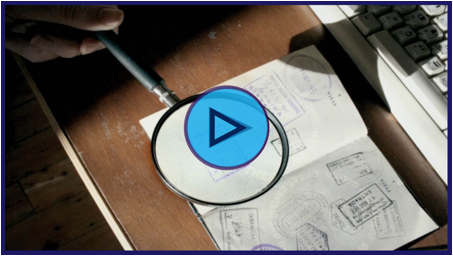
Figure 4: Inside the cars. The Border Crossing by Jill Daniels. High Ground Films 2011.
Screenshot with link to video excerpt.
After the completion of Not Reconciled I turned to focus on autobiography. Delving into autobiography in order to mediate memory involved a process, an excavation, a digging deeper, which, I would argue, lends itself to experimentation, the poetic and the uncertain. It brings one a step closer to an acknowledgement that subjectivity and self-reflexivity may provide rich possibilities for the cultural exploration of the social world. However, autobiographical filmmaking always carries with it a challenge to the notion of the possibility of a unified subject. Where the filmmaker is both the subject and the object of the gaze, she is necessarily divided but it is that very division that, I would argue, makes it so compelling. The Border Crossing, a forty-seven-minute film, was the second film I made for my doctoral thesis. It takes a directly autobiographical approach to my memories of a traumatic experience, a sexual attack. The fact of the incomprehensibility of the violent experience continues to haunt me and has led to its non-assimilation through direct recall. I therefore chose to use my subjectivity, which, while breaching the normal standards of objective documentary filmmaking by including fictional and personal elements, would articulate a metaphorical evocation of the past in the present. After being sexually attacked while hitchhiking in the Basque country, I wrote an account of the traumatic event. Forty years later I felt sufficiently distanced from the experience to explore it and to contextualise it in a cinematic mediation of the event.
Articulating an “authentic” cinematic representation of memories of the past always poses particular problems for the filmmaker. Individual memories are central components of our inner worlds and provide us with the sense of our individual and communal identity. Memories may be perceived as affected by our visual, aural and sensory inner worlds. Their perception in our interior world is subjective and takes different forms. A memory may sometimes appear to us as fixed, resembling an image of a frozen moment in time. Some memories appear fragmented and unreliable, containing significant elisions in time or place and they may continually change in form and sensation. Memories may disappear from our view altogether or reappear, seemingly unbidden, or as a result of the effect of external forces. This is complicated by the knowledge that individual memory may be cinematically unrepresentable via literal digital or analogue filmic means. “Memory” cannot be seized and brought in front of the camera to be filmed. Further, every time we “remember” an event, an image, sound, or a sensation from the past, we always “remember” in the present.
In contrast to Not Reconciled,where the fictional elements were created in the editing process, after preproduction research and the filming process were carried out, the Border Crossing was planned in advance and a draft of the fictional elements was scripted in preproduction. During the shoot I obtained observational footage of daily lives and carried out filmed interviews in order to contextualise my subjectivity in the social world. Given the unreliable nature of memories of traumatic experiences I aimed to create uncertainty. On one occasion I went to the railway station in Irun, on the border of France and Spain. I had the feeling that I had sat on a bench in this station during my journey. It felt very familiar but I could not connect it to a specific memory. Freud refers to this feeling as an “uncanny moment”, a feeling of déjàvuthat leads to a sense of depersonalisation, of a splitting of identity. Later in the editing I represented this “uncanny moment” in a sequence of stills I took in the station; an unidentified man in the background appears to move along the platform towards the camera; my voice over these stills notes my feelings of déjà vu and the sensethat a memory may be an imagined memory, not a lived one.
During a visit to the Basque country I was introduced to Maria, a photographer whose father was sentenced to death during the Spanish Civil War. The sentence was later commuted but he spent many years in prison. This encounter chimed with my interest in the events of the Civil Warand she agreed to be filmed looking at photographs of her father and reading from his prison diary. Later, when I was filming Maria in her home, she told me she had crashed a car while driving on a motorway and that her niece had died in the crash. Maria had shown little strong emotion during her conversations about her father but now she appeared to be emotionally affected by her “confession” and she abruptly changed the subject. Her account was fragmentary, but it resonated with the narrative of my sexual attack and I edited it into the film. On another occasion, while I was filming a demonstration in support of Basque political prisoners in Bilbao, I came across Aitziber, a young Basque woman who talked passionately to me about her memories of torture at the hands of the Spanish police. In the edited film my fictionalised voiceover notes my fascination with these two women who suffered from the continuing effects of memories of traumatic experiences.
In the edited construction of The Border Crossing I explored the fragility of remembering and forgetting and the nonassimilation of traumatic experience by conjoining the voices of Sian— who enacts the role of my surrogate on screen—and mine, which constantly make reference to “my” unexplained desire to locate the exact site of the border crossing in Spain, where I waited at night for a lift to France. The voiceover descriptions of events often contradict the images in the frame. In a very long take of the interior of a car as it moves through landscape, Sian’s voice and mine describe in the present tense a sequence of events occurring inside the car between me and a young man; these events may only be imagined by the spectator, since if they are happening at all, they are outside the frame. In another sequence in a café, which is empty except for a man standing by the door, a present tense voiceover describes events that are happening in the café; these are also not shown in the frame and the shot ends with the man leaving the now empty café. In another set of sequences images of different border crossings are repeated throughout the film. These strategies were chosen in order to create a metaphorical evocation of physical divide and contestation and to convey the unreliability of subjective memory. In the inclusion of extensive static images of signifiers of the ongoing nationalist struggle for an independent Basque state through shots of political posters and demonstrations in support of Basque nationalist prisoners, and the inclusion of the sequences of Maria and Aitziber, I sought to link past and present, the imagined with the happened.
Figure 5: Enactment and home movie. My Private Life by Jill Daniels. High Ground Films 2014.
Screenshot with link to video excerpt.
Continuing my exploration of memory and autobiography I began to film my elderly Jewish parents in their small flat in North London, interviewing them about their memories of the past and recording the routines of their daily lives. In 2014 I completed My Private Life, a sixty-three-minute autobiographical film. I did not fully plan this film, beyond the vague aim of telling the story of the turbulent effect on my familial history of my father’s unacknowledged sexuality. My parents divorced after twenty years of marriage, but after thirty years apart they decided to live together again as “friends”. For this film I drew upon the work of Annette Kuhn who observes that most families have secrets but if these are buried and unspoken for years, they may sometimes escape conscious awareness and create a form of amnesia in some family members (2). I adopted an autoethnographic approach, in order to inscribe myself in the film as the semi-fictionalised “daughter”, a role that Catherine Russell describes as “a form of ‘self-fashioning’” (277). To this end, I filmed family photographs, and conducted interviews with each of my parents separately about their memories of the past. Since they had led itinerant lives throughout my childhood, I filmed some of the many flats and houses where they had lived. I filmed their friends when they visited their flat. My Private Life and its split-screen successor My Private Life II (2015) are the only films in this case study where I occasionally appear in frame and address the camera directly. My aim was to evoke a sense that all three subjects were “trapped” in a dysfunctional familial relationship. During the shoot my father’s friend revealed that my father is gay. He remarks that my father was sacked from his employment and then asks me: “Did he tell you why they pushed him out, was it because he was gay or something?” Off-screen I reply: “Actually, he never really said.” “Hmm. Hmm”, says the friend. It is my father, not my mother, who reveals she was the victim of abuse. After the death of my mother, it is the handyman who acknowledges the existence of family secrets: “Your mum, how can I put it, was very secretive to herself and maybe to a lot of other people.” These revelations, however obtained, may afford the spectator a greater sense of empathy with my parents, while they underline contested identities fixed by secrets. Later, I filmed fictionalised enactments to convey the daughter’s frustration over my mother’s refusal to acknowledge my stepfather’s violence. I did not confront my parents directly in My Private Life. Just once during a filmed interview with my mother, where the camera follows her slowly as she moves in and out of frame, is the expectation there may be a meaningful revelation, but she is interrupted by a telephone call and the shot cuts.
There are many interviews in My Private Life (and in all the films in this case study) in the form of conversations between my parents and me. It is generally assumed that interviews, although they may be subjective, serve to provide narrative authentication. In the mediation of a dysfunctional family where each member may be concealing long-held secrets, such interviews may be misleading. There are also ethical considerations to be taken into account in the choice of direct interviews when the filmmaker perceives that the interviewees do not wish to be confronted. I had no idea how long I would film, but after a year of filming my mother died. This was entirely unexpected and brought the filmed interviews to an abrupt and inconclusive end. I decided to continue filming my father to see whether he might reveal his secrets and how he would cope with the loss of my mother. After he packed up the flat and moved house, I filmed him in his new flat and accompanied him to Spain, where he had lived for many years, and the filming ended.
During the editing I used my parents’ extensive voiceovers and mine over images of the houses and photographs. My parents’ voices mingle with mine, not in conversation, since my parents talk in the past tense and my voice is generally in the present tense, as I search their narratives for clues that may reorder their fixed narratives. My memories are often voiced in a present tense “you” addressed to my mother. I structured the narrative by dividing the film into three sections; the first two sections are centred on each of my parents in turn as they offer alternative views of the same events. The last section is structured around my father and me. In focusing on different memories and viewpoints of each of the characters I aimed to indicate how a shared history may be recalled and have different meanings. During the editing I decided to film my hands constructing a model of a terraced house; in the final shots, cobwebs thread their way over the windows of the house now “built”, evoking my failure to achieve any revelations of secrets that may rebuild the familial relationships. The fictionalised enactments and home movies, the nonlinear narrative intercut with interviews, observational filming of daily lives, and shots of the many buildings my parents lived in and the construction of the model house and voiceovers in different tenses may evoke a deep sensation of contested identities.
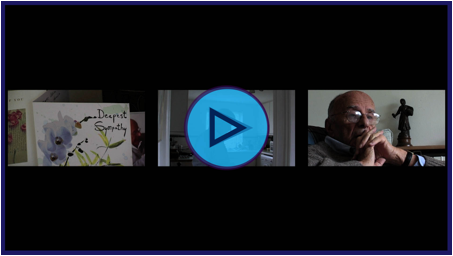
Figure 6: My Private Life II by Jill Daniels. High Ground Films 2015. Screenshot with link to video excerpt.
The following year I re-edited My Private Life. My Private Life II is a shorter, twenty-five-minute split-screen version of My Private Life. It is constructed entirely from the footage from the earlier film with a linear narrative structure, but the structure is fragmented through the use of images that are often repeated in the film and across the frames. Sometimes the frames are black; each character is generally confined to one frame with the aim of underlining the rigid separation between them. This methodology encourages the spectator to make links through the different images in a methodology, which Alexander Kluge refers to as constellational filmmaking:
Constellational filmmaking is a gravitational power, like the sun. It is not linked by hinges to the planets and the moons. They’re quite independent, you see, but the gravitational power brings them into Newton’s order. Complete galaxies function like this. […] This is independent from direct links. It has gaps. It is a montage. […] Without direct link, without grammatical connections, you show context (Kluge qtd. in Thomas). [1]
In using my earlier film as “found footage” my aim was to reflect on the different possibilities of format and editing choices and to expand the notion of uncertainty and lack of closure since the text may always continue in new forms to create new meanings. My Private Life II is a stand-alone film and it is not necessary to have seen the earlier film. At the heart of this methodology is the use of repetition, of images, gesture and sound to allow a reconsideration of the earlier film’s discourse and a reconsideration of the way the image was shown on the screen earlier in the film. Repetition has the force of emphasis and is not a return to the identical (Agamben). The ease with which digital images may be obtained and replicated means that documentary filmmakers may rework their past films with ease to experiment with stylistic forms to create new meanings and a range of viewing experiences; to evoke uncertainty not closure. This may deepen spectatorial participation rather than identification in the reading of images and allows the possibility of new mediations, new aesthetic possibilities and new rhetoric.
Collective Memory and Place
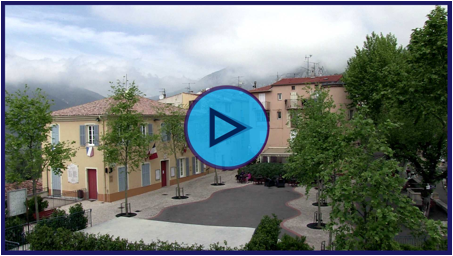
Figure 7: Journey to the South by Jill Daniels. High Ground Films 2017. Screenshot with link to video excerpt.
In my next film, Journey to the South (2017), I focused on collective memory and the use of the subjective voice in the construction of an essay film. The essay film always has a duality because of the form’s fundamentally enquiring nature, and so as a genre it is never stable. As Louis Giannetti points out: “an essay is neither fiction nor fact, but a personal investigation involving both the passion and intellect of the author” (26). Since it is not pinned down to a specific form, the essay film cannot be easily classified. This enabled my experimentation with hybrid strategies outside the normative classifications of genre.
I conceived Journey to the South when a friend living in Menton, a small town on the French Rivieria, told me about the unsolved murder of a shepherd that took place twenty-five years earlier in a mountain village, Castellar, not far from Menton. Over the years there have been three murder trials of local hunters without resolution; each of the accused pinned the blame on the others. Bullets were found at the scene, but the gun, an old hunting rifle, was never found. There is a very strong tradition of hunting in the mountains in the South of France—particularly the hunting of wild boars—which helped small villages to survive. During the First and Second World Wars, Castellar was depopulated, agriculture went into decline and the population dwindled. In recent years some agriculture has been re-established, bringing in a beekeeper, small-scale organic farming and the rearing of goats and sheep. However, this new type of agriculture brought “outsiders” into the village with new ideas. As Mikhail Bakhtin observes, collective memories of the familiar may create a nostalgic “idyllic re-inscription” of the lost way of life in a village threatened with dispersal: “idyllic life and its events are inseparable from this concrete, spatial corner of the world where the fathers and grandfathers lived and where one’s children and their children will live” (225). The murder appeared to be the finale to a bitter unresolved feud between the hunter “clans” who clung to the hunting tradition and Pierre, the idealistic shepherd, an educated outsider who did not hesitate to kill a dog if it “worried” the sheep on his land.
Decades after the murder the central characters in this drama remain in the village. The yearning for a lost way of life by descendants of the original villagers appears as a nostalgic view of an idyllic past—an idyll that was, however, marked by inequalities and poverty—and this nostalgia eventually led to violence. I proposed my film as an essayistic enquiry into how a violent act may affect the inner world of a human being; and how the effects of the violent act when there is no perceived justice may transform a community. In Castellar the traumatic event left the village inhabitants without a homogeneous collective memory, leaving a silence in the village, in what Claudia Koonz describes as “[a] kind of historical weightlessness [that] renders words, values, actions, and ideas meaningless” (258).
Confronted with the problem of representing a village in stasis, whose inhabitants had taken a tacit vow of silence—a problem I had already encountered in Not Reconciled—I took an elliptical approach to create uncertainty in order to mediate the contested identities of the village inhabitants, rather than to provide a “resolution” to the murder. I carried out very little preplanning, but in my role as “investigator” I created a fictionalised version of myself, one who stumbles upon the story of the murdered shepherd, delves into it, but faced with no witness accounts, struggles to make a film. In the film this struggle is represented through my surrogate character, the voice of Katherine Mansfield the short-story writer. This allowed a layer of distantiation that drew the film away from any notion of an investigatory documentary. On one of my research trips I discovered that Mansfield had lived in Menton towards the end of her life—she was dying of tuberculosis—and had visited Castellar; in a letter she gives an evocative description of a journey into the mountain. Her journals contain rather melodramatic accounts of her problems with her creative writing. I filmed extensive shots of landscape during different seasons, the routines of daily lives and conversations with Pierre’s family and some of the many foreigners who had settled in and around the village. Eventually, one of the hunters agreed to talk on camera about his passion for hunting but during the filming, when I mentioned Pierre, he became evasive.
In editing Journey to the South I scripted my role as a voiced flâneuse/filmmaker, who guides the spectator through a fictionalised journey from a city in the north to the south of France. My journey (and the film) begins with a sequence of black-and-white stills of the city (shot in London) and focuses on the expressionless faces of people hurrying through crowded streets and subway. My voiceover states my intention to escape the city for the warmth of the South. The film then cuts to images in colour in Menton. The town seems peaceful and my voice, edited over images of a beach full of holiday-makers on a beautiful sunny day, says that I remember family holidays I took as a child. In a later shot my voice, over an image of the exterior of a large house, says I have found a place to stay. My “hosts” are an elderly woman and a middle-aged man, perhaps her son or her carer—the relationship remains uncertain; the apartment is full of old-fashioned furniture, religious paintings and Marxist memorabilia. The sense of a temporal dislocation from the present is heightened when the film cuts to a refugee camp on the beach, located next to a border crossing. In a later black-and-white slow-motion sequence, well-dressed French tourists (including my host and an unidentified woman) dance to 1960s rock music while my voiceover quotes from a newspaper article giving the definition of a psychopath. The discordant effect of this sequence is reprised in a further black-and-white slow-motion sequence when some of the villagers talking at a social event eye the camera suspiciously before turning away, while Pierre’s father stands unmoving and silent in the background.
When the film moves into Castellar, the absent Pierre’s voice—edited over close-up shots of a diseased tree—gives a ghostly address to his murderer, reflecting on his new role as a “witness” to his own death. In another shot, a sign pinned to a door proclaims the “Death of the Countryside”. In a further sequence the village inhabitants carry a larger-than-life-sized model of St Sebastian—its naked body pierced with arrows—into the village church, while an unidentified woman’s voiceover says “the problem” was the struggle for the land that led to the death of the shepherd. Later, Pierre’s relatives and friends criticise the village’s mayor and other inhabitants for its state of disintegration. However, an optimistic note is struck through images of a young boy playing happily in an aesthetically beautiful landscape; repeated shots of a caged bird who eventually flies out of frame; and in a shot of the current shepherd who tenderly cradles a tiny orphaned lamb in his arms and names her Étoile (Star).
Conclusion
My aim in the films produced for this case study was to push the boundaries beyond traditional academic knowledge production, but in doing so, to add to knowledge. In particular I have shown how the use of the subjective voice, often in different tenses and disconnected from the images in the frame, may illuminate and guide a film’s discourse in the mediation of memory and subjectivities in order to obtain deeper meanings. In constructing the films, I placed great value on my response to chance encounters during the filming process and explored how the use of varied cinematic strategies and techniques such as critical realism, use of the archive, enactments, the epistolary address, split-screen view and found footage may be valuable in the exploration of subjectivities to add to knowledge in the mediation of place and memory, including memories of traumatic experiences.
The benefits of carrying out my practice within the academy have been the provision of valuable research time; a small amount of funding offered by the academy; support for the dissemination of my research through the Research Excellence Framework (REF) in 2014, and the publication of my research in several prestigious academic journals and books. In the academy I have the freedom to carry out further experimentation into hybrid strategies of critical realism and enactment as well as the use of the subjective voice; experimentation which always runs the risk of failure—rarely possible in the mainstream film industry and broadcast television. My research has also brought prestige to the academy through the impact with audiences of film festival and public screenings and the screenings of films, and presentations of papers referencing the practice at international academic conferences.
Notes
In August 1937, Belchite in Aragon, Spain, was held by Nationalist forces. Republican forces besieged the town. After three weeks of fighting they captured it. The town was reduced to rubble. On 10 March 1938 it was recaptured by the Nationalists, who held it until the end of the Civil War.
[1] I am grateful to the anonymous peer reviewer in the journal Sightlines who alerted me to this interview with Kluge.
References
1. Agamben, Giorgio. “Difference and Repetition: on Guy Debord’s Films.” Guy Debord and the Situationist International: Texts and Documents, edited by Tom McDonough, MIT Press, 2004, pp. 313–320.
2. Bachelard, Gaston. The Poetics of Space. 1958. Translated by Maria Jolas, Beacon Press, 1994.
3. Bakhtin, Mikhail Mikhailovich. The Dialogic Imagination: Four Essays, translated by Caryl Emerson & Michael Holquist, edited by Michael Holquist. U of Texas P, 1981.
4. The Border Crossing. Directed by Jill Daniels, High Ground Films, 2011, vimeo.com/93590375
5. Chapman, Jane. Issues in Contemporary Documentary.Polity Press, 2009.
6. Farassino, Alberto. “Gitai: The Nomadic Image.” The Films of Amos Gitai: A Montage, edited by Paul Willemen. BFI, 1993, pp. 16–18.
7. Gianetti, Louis D. Godard and Others: Essays on Film Form.Fairleigh Dickinson UP, 1975.
8. Journey to the South. Directed by Jill Daniels,High Ground Films, 2017, vimeo.com/196726666
9. Kluge, Alexander. Interview. Conducted by Jonathan Thomas. The Third Rail, Issue 10, 24 Oct. 2016, thirdrailquarterly.org/alexander-kluge/
10. Koonz, Claudia. “Between Memory and Oblivion: Concentration Camps in German Memory.” Commemorations: The Politics of National Identity, edited by John R. Gillis. Princeton UP, 1994, DOI: https://doi.org/10.1515/9780691186658-016
11. Kuhn, Annette. Family Secrets: Acts of Memory and Imagination. Verso, 2002.
12. Landy, Marcia. The Historical Film: History and Memory in Media.The Athlone Press, 2001.
13. My Private Life. Directed by Jill Daniels, High Ground Films, 2014, vimeo.com/104385249
14. My Private Life II. Directed by Jill Daniels, High Ground Films, 2015, vimeo.com/139077147
15. Not Reconciled. Directed by Jill Daniels, High Ground Films, 2009, vimeo.com/28050084
16. Rascaroli, Laura. The Personal Camera: Subjective Cinema and the Essay Film. Wallflower Press, 2009.
17. Russell, Catherine. Experimental Ethnography: The Work of Film in the Age of Video.Duke UP,1999.
18. Schenker, Andrew. “Historical Recovery in a Spanish Village in The Sky Turns.” The Village Voice, 9 Feb. 2011, www.villagevoice.com/2011-02-09/film/historical-recovery-in-a-spanish-village-in-the-sky-turns
19. The Sky Turns [El cielo gira].Directed by Mercedes Álvarez, Alokatu S. L., 2004.
Suggested Citation
Daniels, Jill. “The Subjective Voice and Hybrid Documentary Filmmaking Strategies: A Case Study.” Alphaville: Journal of Film and Screen Media, no. 17, 2019, pp. 97–110. https://doi.org/10.33178/alpha.17.06
Jill Daniels is a renowned filmmaker and scholar. Over thirty years she has made numerous documentary films. She has won many international awards including Jury Award for Best Experimental Film at Ann Arbor Experimental Film Festival, USA, in 2017 for My Private Life II (2015). She is coeditor of Truth, Dare or Promise: Art and Documentary Revisited (2013) and her monograph, Memory, Place and Autobiography: Experiments in Documentary Filmmaking was published in 2019. She is a member of the editorial board of Media Practice & Education. She teaches Film Practice and Theory at the University of East London.





